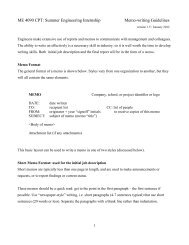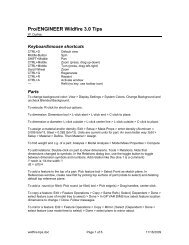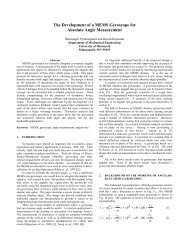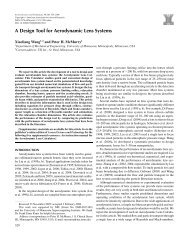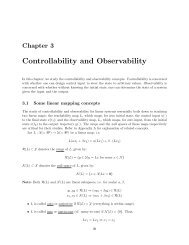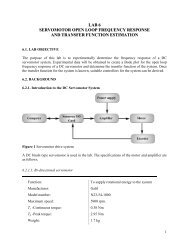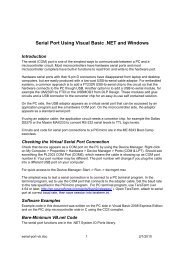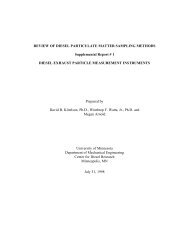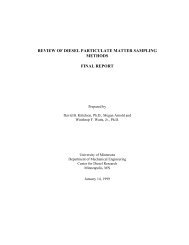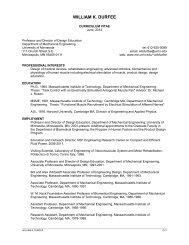Design and Usability of a Home Telerehabilitation System to Train ...
Design and Usability of a Home Telerehabilitation System to Train ...
Design and Usability of a Home Telerehabilitation System to Train ...
You also want an ePaper? Increase the reach of your titles
YUMPU automatically turns print PDFs into web optimized ePapers that Google loves.
hemisphere, leading <strong>to</strong> the search for potent mechanisms that promote the res<strong>to</strong>ration <strong>of</strong><br />
voluntary recruitment <strong>of</strong> suppressed neurons. The literature is clear that movement retraining<br />
for stroke rehabilitation must be intense <strong>and</strong> must be prolonged <strong>and</strong> the patient must engage<br />
the task repeatedly <strong>and</strong> independently (Schmidt, 1988, Winstein et al., 1994). Importantly,<br />
self-improvement does not stem directly from the therapist coaching <strong>and</strong> guiding the activity;<br />
rather, improvement is thought <strong>to</strong> stem from internal information processing by the subject<br />
with consolidation <strong>of</strong> all the cues inherent <strong>to</strong> the task leading <strong>to</strong> a refined mo<strong>to</strong>r output<br />
(Winstein et al., 1994). Thus, subjects must be given opportunities <strong>to</strong> train themselves. The<br />
guiding <strong>and</strong> coaching efforts by therapists may be helpful in the short run but in the long run<br />
it will be the subject’s own information processing, including failed efforts, that will lead <strong>to</strong><br />
the cellular <strong>and</strong> molecular changes that stimulate mo<strong>to</strong>r learning/relearning <strong>and</strong> a fuller<br />
recovery.<br />
One example <strong>of</strong> modern therapy that is based on mo<strong>to</strong>r learning principles is constraint-<br />
induced movement therapy. CIMT forces the patient <strong>to</strong> use the paretic limb while the healthy<br />
limb is restrained <strong>and</strong> was designed <strong>to</strong> overcome learned nonuse <strong>of</strong> the impaired limb (Taub,<br />
1980). Clinical studies have shown CIMT <strong>to</strong> be effective for patients who start with some<br />
residual range-<strong>of</strong>-motion (Liepert et al., 2000; Page et al., 2004; Ploughman <strong>and</strong> Corbett,<br />
2004, Taub et al., 1993; Taub et al., 1999). CIMT requires massed practice (practice time is<br />
greater than rest time) for 6-7 hours daily for two weeks with continual therapist supervision<br />
(Taub, 2000).<br />
Forced-use such as CIMT, however, may not be the most potent behavioral stimulus for<br />
neuroplastic change. Forced-learning may be even more effective. This is a pivotal question<br />
in rehabilitation as it dictates the type <strong>of</strong> tasks <strong>and</strong> level <strong>of</strong> cognitive engagement that<br />
Track-JBiomechEng.doc Page 4 <strong>of</strong> 31



